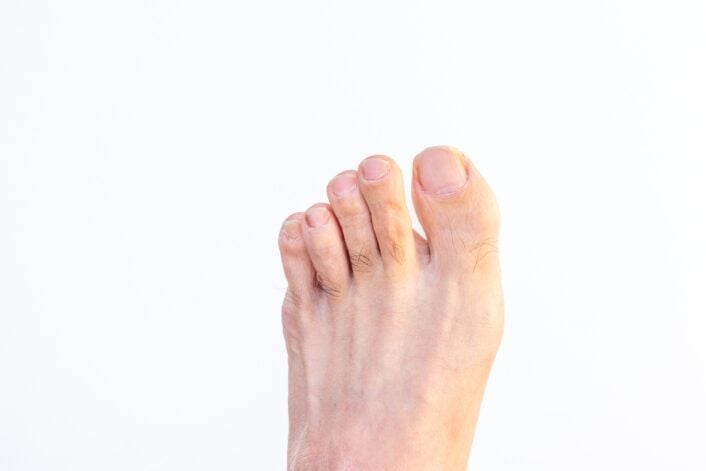
Disclaimer: This article is for informational purposes only and is not intended to diagnose any conditions. LifeDNA does not provide diagnostic services for any conditions mentioned in this or any other article.
Gout is a serious form of arthritis. It is known as a sudden and severe inflammation in the joints caused when uric acid levels in the bloodstream are high, leading to the formation of sharp urate crystals within the joints. If this is not addressed, gout can result in chronic pain and joint damage that could also lead to compromising renal health.
Gout mostly affects men, especially after age 40, and post-menopausal women when they lose estrogen’s protective effects. It commonly targets the big toe joint but can also impact knees, ankles, hands, wrists, and elbows. A deeper understanding of the different types of gout, its risk factors, and available treatment options are important for effective management and prevention of gout attacks.
You May Also Like: Genetics of Kidney Stones.

Gout comes in two main types: primary gout and secondary gout. Primary gout refers to elevated levels of uric acid due to extrinsic factors such as too much consumption of alcohol or sugary beverages and food items that are high in purine. Secondary gout is linked to underlying health issues like chronic kidney disease or long-term use of certain medications that affect the kidneys’ function in filtering excess uric acid and excretion through urine.
Increased Uric Acid Levels: This condition referred to as hyperuricemia is a main trigger for gout as it can lead to the formation of urate crystals in the joints.
Impaired Excretion Pathways: This condition is a result of factors such as kidney disease or certain medications that interfere with uric acid excretion. As a result, the accumulated uric acid crystallizes in the joints, triggering inflammation and pain.
Genetic Factors: Genetic factors are crucial in gout, specifically those affecting how the body handles uric acid. Studies have shown that 65% of gout cases are inherited or run in the family. Recognizing genetic influences like identifying family medical history along with lifestyle modification will help individuals at higher risk.
Diet and Lifestyle Factors: High purine foods (e.g. crustaceans, red and organ meats, oily fishes) and alcohol or sugary beverages are the most common causes of the spike in uric acid levels. What you do daily and what you give your body is essential in treating gout as it could help lower uric acid levels and reduce strain on the joints, therefore preventing gout flare-ups.
Diagnosing gout involves a thorough assessment of symptoms, medical history, and laboratory findings. Healthcare providers begin by evaluating the distinct traits of joint pain, considering its sudden onset, severity, and associated symptoms like swelling and redness.
They also explore potential risk factors such as family history, dietary patterns, and existing medical conditions such as hypertension or kidney disease. This approach ensures accurate identification of gout, enabling healthcare providers to implement appropriate treatment and preventive measures effectively.
Our understanding of gout genetics has been completely transformed by Genome-Wide Association Studies (GWAS) and Mendelian Randomization (MR) investigations. These studies have greatly improved our grasp of the genetic factors behind gout. By involving diverse populations in studies and combining research findings, we can advance our understanding of how genetics influence gout and its connections to other health factors like hypertension as well.
A study, involving 88,347 participants, among whom 3.68% had gout and 13.52% had hypertension(with men representing 31.9% and a mean age of 51.1 years) used a new method called Mendelian randomization (MR) to identify the relationship between gout and hypertension. The result suggests that having gout might increase the chances of developing hypertension, while hypertension does not seem to have a causal effect on gout.
In addition, recent studies using Mendelian randomization have not only established the relationship between high uric acid levels and gout but have also broadened our understanding of the genetic factors involved. Our recent findings have revealed numerous other genes implicated in various stages of gout development. Among these, SLC2A9 (GLUT9) is involved in moving substances across cell membranes, playing a vital role in regulating uric acid levels in the body. Variation in the SLC2A9 gene may disrupt its function, potentially disrupting uric acid metabolism and contributing to the development of gout. Additionally, numerous genes such as SLC22A11 and GCKR also contribute to regulating uric acid levels, expanding our understanding of the genetic factors behind gout.
Research in the UK Biobank has identified several genetic markers as well that are linked to uric acid levels, including GCKR, which regulates glucose metabolism in the liver. The GCKR gene has been associated with changes in uric acid concentrations, potentially affecting gout susceptibility through metabolic pathways. Another key gene, PDZK1, plays a crucial role in urate excretion through filtration by the kidneys until release via urination. Variations in PDZK1 can disrupt these interactions, leading to disturbances in uric acid handling and increasing the risk of gout.
A 2020 study has analyzed 190 DNA samples from pregnant Filipino women in Hawaii. It found that more of them carry a gene variant that is linked to a higher susceptibility risk of gout compared to Caucasians, Han Chinese, and African Americans. A specific variation rs2231142 G>T in ABCG2 was observed to be associated with a higher risk of hyperuricemia and gout. When ABCG2 doesn’t work properly due to genetic changes, it slows down the removal of uric acid. This can lead to higher uric acid levels in the blood, increasing the likelihood of developing gout. Even though none of the women had gout, the results suggest that Filipinos may have a higher genetic tendency for gout and high uric acid levels. This may be the reason why they seem to produce less urine acid than Caucasians, showing how genes, ethnicity, and diet all play a role in developing gout.
Treating age-related eyelid sagging, or ptosis, involves a range of options from non-invasive therapies to surgical interventions. Here are some effective ways to address this condition, based on scientific evidence and expert recommendations:
Although gout cannot be cured, it can be effectively managed with various approaches that help reduce symptoms, control inflammation, and prevent future flare-ups. Here are some common treatment options:
*Understanding your genetics can offer valuable insights into your well-being, but it is not deterministic. Your traits can be influenced by the complex interplay involving nature, lifestyle, family history, and others.
Our reports and suggestions do not diagnose or treat any health conditions or provide any medical advice. Consult with a healthcare professional before making any major lifestyle changes or if you have any other concerns about your results.


